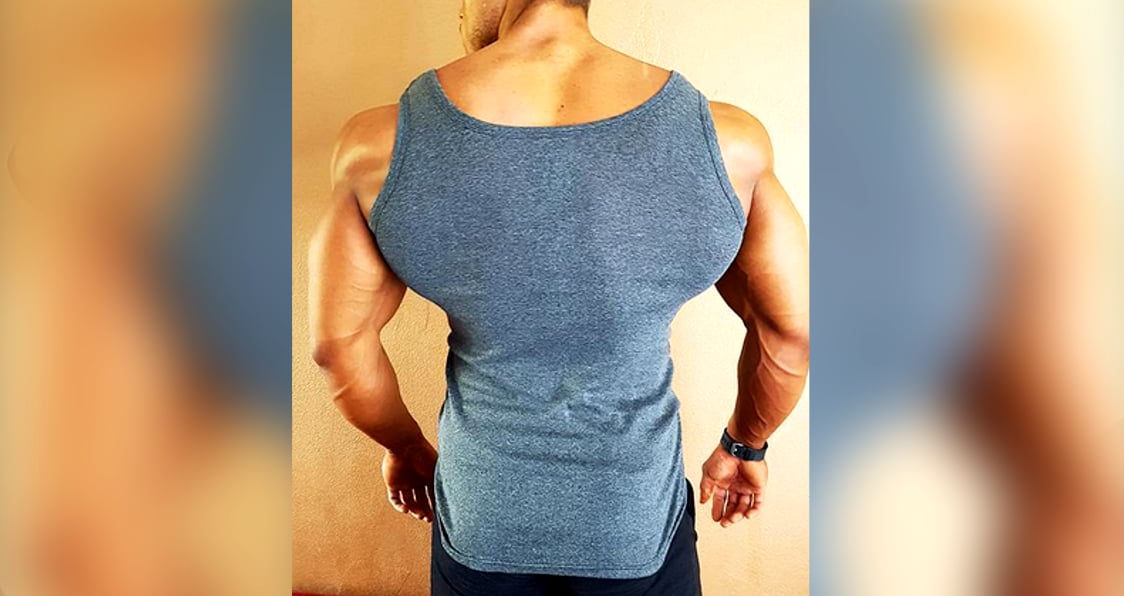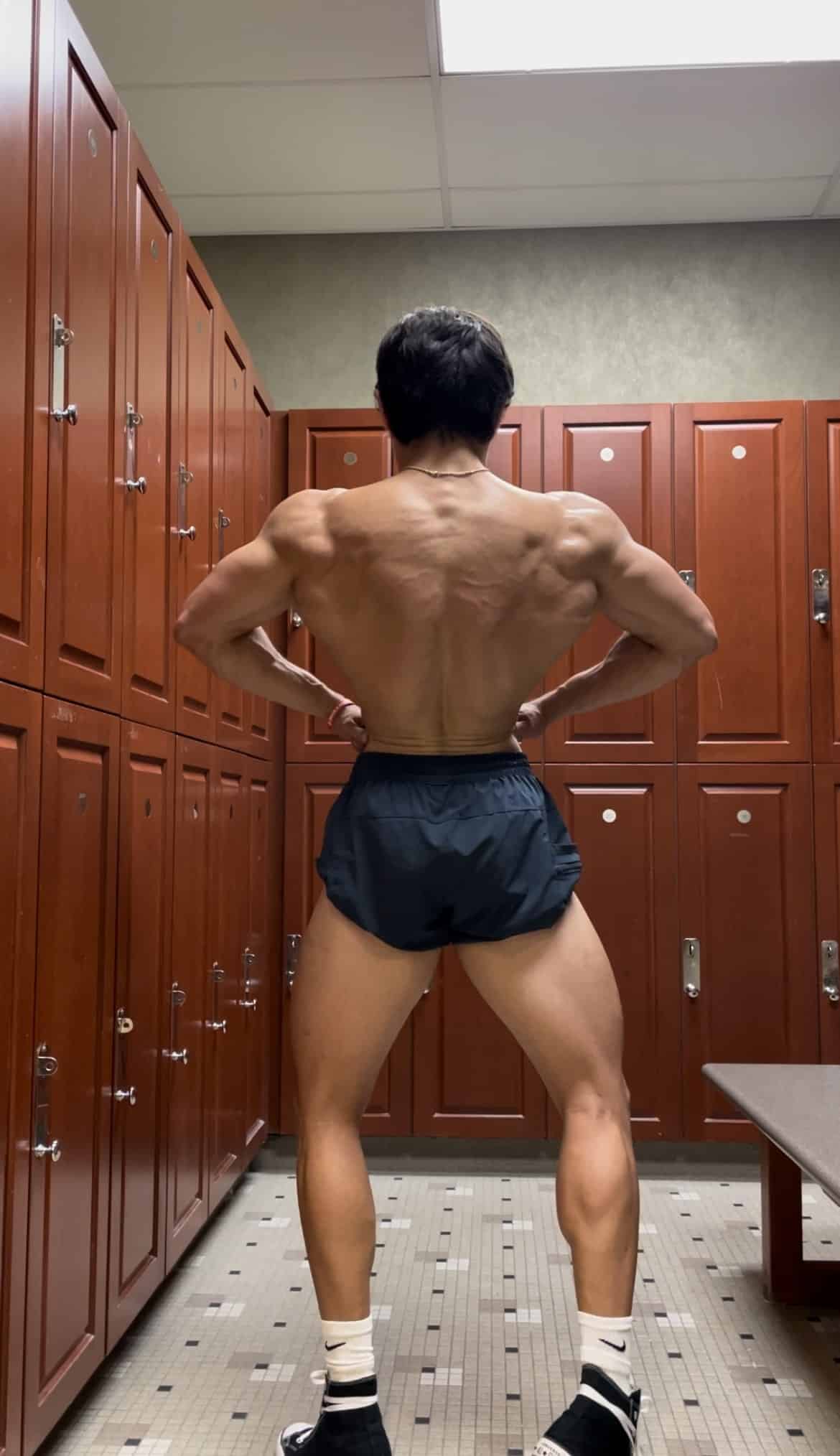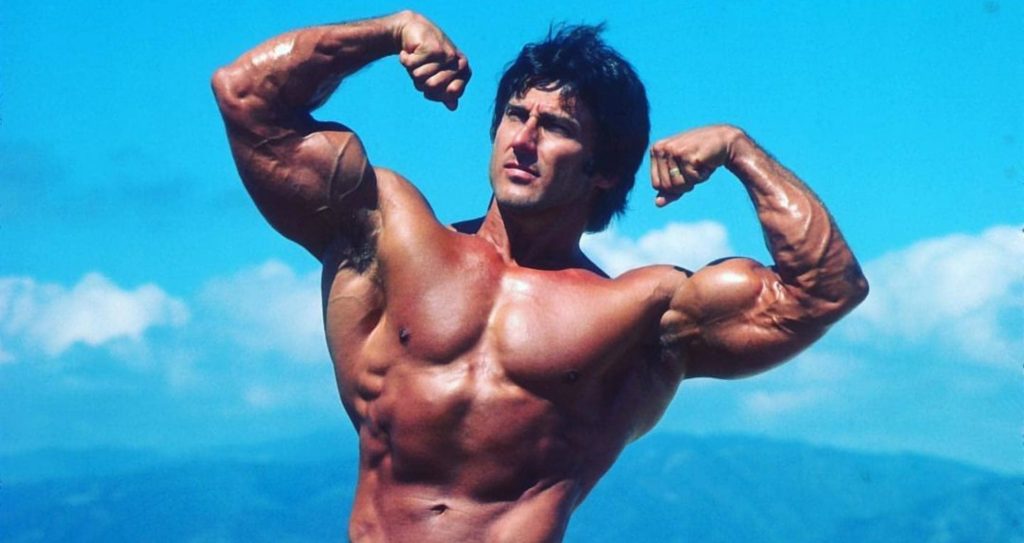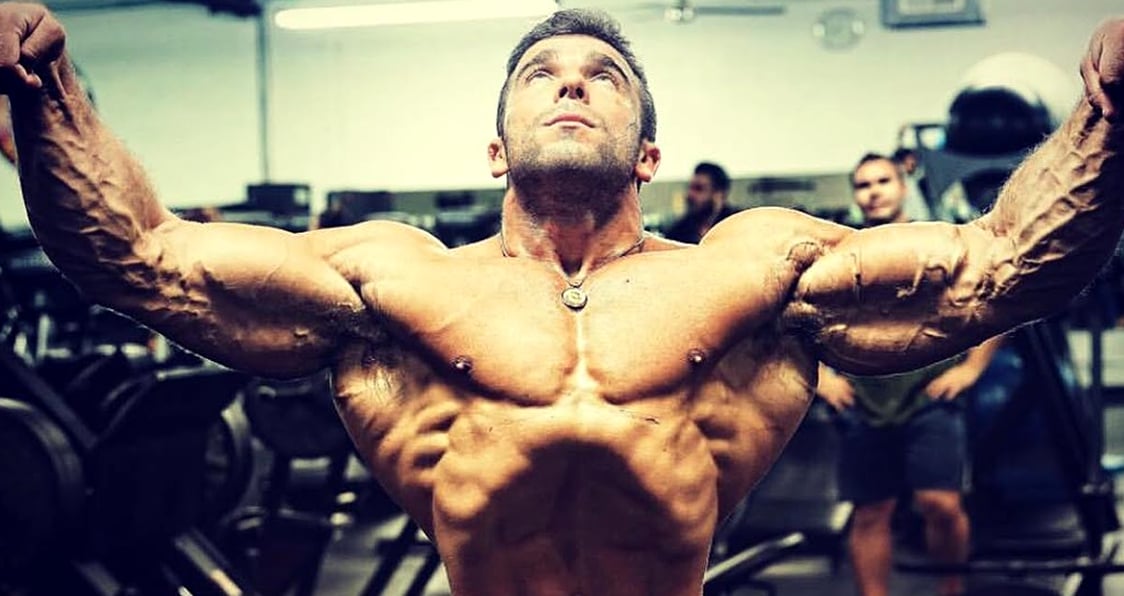A Comprehensive Guide to Developing the Perfect V-Shape
When it comes to bodybuilding and aesthetics, the ultimate goal is to develop a symmetrical, well-rounded physique. While modern-day bodybuilding has moved more towards building pure size, athletes in the Golden Era of bodybuilding typically sported smaller waists and an incredible V-taper as a result. But what actually is the V-taper and how can you effectively attain it?
Many people will say that the V-taper is pure genetics, and while that does reign true to an extent, how you diet and train has a large effect on your shape. Let’s dive in.
The V-Taper Overview
The V-Taper simply refers to the V-shape of the torso and is a look that is absolutely paramount in bodybuilding. It refers to the shape from the shoulders to waist, that forms a V. The look was popularized by Golden Era bodybuilders like Frank Zane, Franco Columbu, and Arnold Schwarzenegger. If you look at them, they had the broad shoulders and wide backs that gradually transitioned to a slim waist, forming the perfect V.
The V-Taper is more of an aesthetic look that is still popular amongst today’s bodybuilders, but you will see it more prominently amongst the classic and men’s physique divisions. Bodybuilders like Chris Bumstead and Breon Ansley are prime examples of this physique.
How to Obtain the V-Taper
The ultimate V-Taper can be attained through appropriate strength training and nutrition. Due to the shape and size of the muscles, the V-taper is actually a very natural look. However, carrying excess body fat, poor-quality strength training, and postural issues can all interfere with it.
An individual with a well developed V-taper will have large shoulders and a wide back to form the upper portion of the V. They will also have a low body fat percentage and narrow waist to form the lower portion of the V. Remember, you probably can’t have a V-Taper if you have a muffin top! A slim waist gives the illusion of an even wider back, and a wider back gives the illusion of even a smaller waist.
So how can you make it happen?

Key V-Taper Musculature
It is important to realize that a number of training principles are applied and specific muscles are developed in order to maintain a well-rounded physique. In order to develop the V-taper most effectively, there are three main muscle groups that should be prioritized as significant growth in these areas will have the most impact on creating the V-taper.
1) Latissimus Dorsi
The latissimus dorsi, lats for short, are big wing-like muscles that originate from the lower back and stretch all the way up to the shoulders. The lats are one of the biggest components of the V-taper, as building size in them will increase back width and contribute most significantly towards developing the V-shape that so many desire.
Additionally increasing back size and width will also help give the illusion of a smaller waist and enhance overall aesthetics. They contract to control a range of shoulder movements and also provide stability to the spine.
Vertical and horizontal pulling movements such as deadlifts, lat pulldowns, rows, and pull-ups are all highly effective lat exercises for both thickness and width.
2) Deltoids
The deltoids, delts for short, are the muscles of the shoulders. While the delts are looked at as just one muscle, they actually have three individual portions – anterior, middle and posterior. Building large shoulders is an essential component of the V-taper as this will substantially add width to the top portion of the V.
As with the lats, the delts contract in order to drive a range of shoulder movements while simultaneously stabilizing the joint.
To effectively work the delts the focus should be on all three angles of the deltoid.
3) Abdominals
The muscle group that is most associated with the V-taper is the abdominals, abs for short. When it comes to aesthetics, well-defined abdominals tend to be the most eye-catching element of all.
While it is the reduction of body fat that will contribute the most to abdominal aesthetics, specific ab-targeted exercises can increase the definition of the muscles. If the abs aren’t defined, low body fat won’t matter too much.
The abs are often misunderstood as just one muscle; in fact, there are four individual abdominal muscles – the rectus abdominis, transverse abdominis, external oblique, and internal oblique.
These muscles work to control and stabilize the many movements of the trunk. There are a number of effective ab-targeted exercises including sit-ups, crunches, and isometric holds.
Training Principles for V-Taper Development
There are a number of principles that must be applied to your training in order to bring about efficient changes in muscle size and contribute towards V-taper development.
1) Form Over Weight
While training volume is undoubtedly important for onsetting muscle growth, it is futile if each exercise is performed poorly. Form means everything, and what you get out of each rep means even more. Heavy weight means nothing if your form is sloppy or the reps are too quick.
For optimal muscle growth, time under tension should be prioritized (1). As the name suggests, this is simply the time that the muscle spends experiencing stress. Poor exercise execution or rushing through each rep will not maximize time under tension and the rate of muscle growth may be affected as a consequence.
If you are a beginner, start light and focus on the movements required and muscles being worked. Be willing to spend time and effort on mastering the exercise and establishing a “mind-muscle connection”. To effectively do this, look to slow down the eccentric (lowering) phase of the movement of the exercise and focus on squeezing the working muscle with each and every rep.
Once you have mastered the movements required for the exercise, then you can begin to add significant load. Using this approach will not only allow you to add strength and size most efficiently, it will also promote exercise safely and lower the risk of sustaining an injury.
2) High Volume, Heavy Loads
When it comes to optimizing muscle growth, the research is clear – volume is king. High volume has been associated with the greatest improvements in muscle mass (2).
As a result, the following V-taper program uses advanced training methods such as supersets, tri-sets, and giant sets in order to substantially increase the volume.
Furthermore, the rep range has been kept low to moderate to allow for the use of heavy weight. Using heavy loads will create a large degree of mechanical tension and muscle damage – both of which are key components of muscle hypertrophy (growth).
The traditional belief is that the 6-12 range is optimal for muscle growth (3). However, while the following program does primarily utilize heavy loads and low-moderate reps, there are also a number of accessory exercises that require a high number of reps to be completed.
3) Mechanical Tension
As touched on in the previous section, mechanical tension is one of the biggest driving factors in bringing about significant muscle growth (4).
Mechanical tension refers to the amount of stress that is applied to the muscle. The more tension applied to the muscle, the greater the adaptation will be. While mechanical tension is most commonly associated with heavy, compound lifts, there are a number of other methods that will also effectively apply mechanical tension.
The program uses a variety of exercises and training techniques such as partial reps, isometrics, and eccentrics, in an attempt to manipulate mechanical tension and hypertrophy.
4) Muscle Pump
In bodybuilder training, “the pump“ is something that sought after in the majority of training sessions. The muscle pump occurs when blood rushes to the working muscle causing it to swell and increase in size. As a result, the working muscles will feel full, tight and fatigued.
Muscle pump is typically achieved by performing high repetitions while maintaining tension on the muscle at all times, and many use the pump as a method of encouraging muscle growth. It is theorized that the rush of nutrient-rich blood to the muscle may assist in the repair process and enhance growth.
In the program, the giant set will undoubtedly contribute towards a pump, however, there are specific “finisher” exercises incorporated into the sessions that have been designed to specifically bring about the pump.
V-Taper Training Program
This section will provide detail on a training program that will have a substantial impact on V-Taper development.
As demonstrated below, the program used is from our own Generation Iron team member, who also competes in the NPC, Dylan Wolfinger. These are the exercises he utilizes to build his V-Taper in order to put on size during the offseason.

For The Lats
- Lat pulldowns: 4 sets of 12 reps
- Dumbbell row: 4 sets of 10 reps
- Cable pullover: 4 sets of 15 reps
- Barbell row: 4 sets of 8 reps
- Pull-ups: 4 sets till failure
For the Deltoids
- Dumbbell shoulder press: 5 sets of 8 reps
- Dumbbell rear delt fly: 5 sets of 10 reps
- Dumbbell lateral raises: 4 sets of 12 reps
- Cable face pulls: 4 sets of 12 reps
- Cable lateral raise: 4 sets until failure
For the Abdominals
Dylan trains abdominals every other day and alternates between a few exercises, picking one exercise per day and rolling with it.
- Russian twists super setted with lying leg raises: 4 sets of 12-15
- Hanging leg raises: 4 sets of 15
- Cable crunches: 4 sets of 15
Considering that volume plays such a huge role in muscular hypertrophy, having such a large volume of upper body training will optimally accelerate muscle growth. As you can see, Dylan uses high volume in his training. However, it is important to control each rep and really squeezing the muscle, ensuring you get the most out of what you put in.
Do Legs Contribute to the V-Taper?
While developing the size of the upper body will have the most telling impact on the V-taper, training the lower body can also positively impact V-taper development. Bigger legs also give the illusion of a smaller waist, the wider your lats look. Your V-taper will be like that of the Golden Era bodybuilders.
In addition, it is important that you do not neglect training the lower body and maintain leg size and strength.
Below is a quick leg workout Dylan also uses when trying to put on offseason mass.
For the Legs
- Squats: 4 sets of 10 reps
- Hack squat: 4 sets of 12 reps
- Lying hamstring curl: 4 sets of 12 reps
- Leg extensions: 4 sets of 12 reps
Diet for V-Taper Development
When it comes to changes in body composition, there is no doubt that strength training is important and can bring about significant changes. However, nutrition also plays a highly crucial role in altering your body composition, and it unfortunately is something often overlooked.
As mentioned, carrying excess body fat will interfere with creating the V-taper. It is necessary to lean down to the point where muscles become more visible. If body fat percentage is too high, these muscles will be hidden under a layer of body fat thus impact overall aesthetics.
To facilitate substantial changes in body fat, look to restrict your calorie intake on non-training days to place you in a deficit. During training days, consume for maintenance. This does not mean deplete yourself completely, but maybe find some ways that work for you to drop fat and keep the waist slim while being able to maintain or even put on muscle mass.
Perhaps focus your diet more on protein intake rather than carbohydrates. There are a multitude of different ways to achieve the look you want, but every single person is different. While we can give suggestions, it is up to you to find a diet that works for you!
We have plenty of diet guides on our site to help you succeed in hitting your goals!
Supplementation for the V Taper
As stated before, the V-taper is a mix of low body fat and good muscle definition. Diet and training can get you to that point, but supplementation is something that can possibly accelerate that process.
Supplementation can be just as important in obtaining your goals as diet and training. Supplements are meant to give you the nutrients that you need, but may not get enough of with just diet. They can help you obtain better pumps, more muscle growth, accelerated fat loss, and much more. What are some basic supplements that could help you hit your goals?
- Fat Burners
- Protein Powders
- Multivitamins
- Pre-workout
- Creatine
These are just a few supplements to help you get to your goals. There are plenty more you can look into!
Final Word
The V-Taper is something that can really give you a more aesthetic look. The broad shoulders that tie into the wide lats, and come down to a small waist really make you look like a Golden Era bodybuilder.
By following the V-taper program and applying the recommended training, nutrition, and supplementation principles, you will bring effectively bring about substantial changes to body composition and inevitably achieve the V-taper.
References:
1 – Burd, Nicholas A; Andrews, Richard J; West, Daniel WD; Little, Jonathan P; Cochran, Andrew JR; Hector, Amy J; Cashaback, Joshua GA; Gibala, Martin J; Potvin, James R; Baker, Steven K; Phillips, Stuart M (January 15, 2012). “Muscle time under tension during resistance exercise stimulates differential muscle protein sub-fractional synthetic responses in men”. The Journal of Physiology. 590 (Pt 2): 351–362. doi:10.1113/jphysiol.2011.221200. ISSN 0022-3751. PMC 3285070. PMID 22106173.
2 – Schoenfeld, Brad J.; Contreras, Bret; Krieger, James; Grgic, Jozo; Delcastillo, Kenneth; Belliard, Ramon; Alto, Andrew (01 2019). “Resistance Training Volume Enhances Muscle Hypertrophy but Not Strength in Trained Men”. Medicine and Science in Sports and Exercise. 51 (1): 94–103. doi:10.1249/MSS.0000000000001764. ISSN 1530-0315. PMC 6303131. PMID 30153194.
3 – Schoenfeld, Brad J.; Grgic, Jozo; Ogborn, Dan; Krieger, James W. (2017-12). “Strength and Hypertrophy Adaptations Between Low- vs. High-Load Resistance Training: A Systematic Review and Meta-analysis”. Journal of Strength and Conditioning Research. 31 (12): 3508–3523. doi:10.1519/JSC.0000000000002200. ISSN 1533-4287. PMID 28834797.
4 – Franchi, Martino V.; Reeves, Neil D.; Narici, Marco V. (July 4, 2017). “Skeletal Muscle Remodeling in Response to Eccentric vs. Concentric Loading: Morphological, Molecular, and Metabolic Adaptations”. Frontiers in Physiology. 8. doi:10.3389/fphys.2017.00447. ISSN 1664-042X. PMC 5495834. PMID 28725197.










